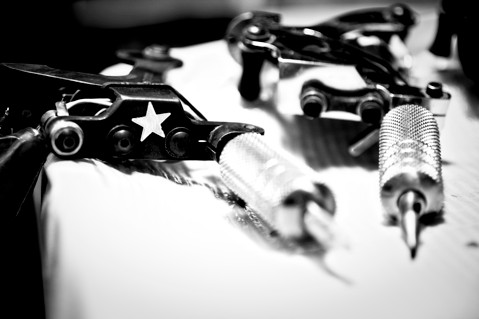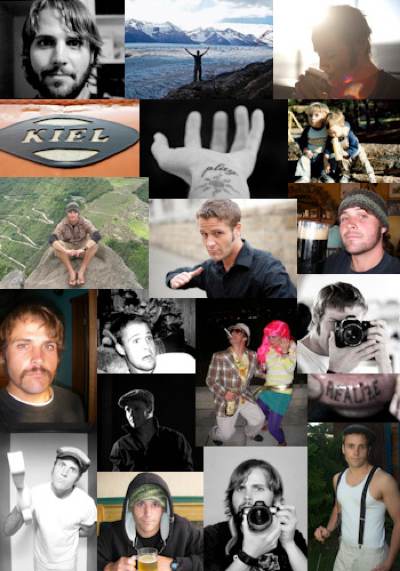I Shoot Artists
Photographer Kiel Rucker Profiles the First of Many Area Artists

Welcome to the first installment of Kiel Rucker’s column, “I Shoot Artists.” Over the next few months, Rucker will interview and photograph a number of local artists, profiling the professionals and exploring what it means to create art here in Santa Barbara. Read below for a quick introduction of the project as well as the first artist Rucker met and shot, Sebastian Orth of Otherworld Tattoo.
Art is everywhere. Anywhere you find people, you will find potential for the creative expression and communication of what matters most, even if only as a statement of one’s belief that nothing, in fact, matters. No matter the medium, we have always used the world and everything in it as the means to convey our experience of this shared existence.
Art is language in its most immediate and primal from. I’ve always loved words, but my favorite medium of late is photography. Words are an incredible means for conveying thought and feeling, but they carry with them the necessity of having agreed-upon definitions. No matter how specific or general you think you are being, there is always room for interpretation.

With photography, as with other non-linguistic mediums, the communication of an idea, thought, or feeling isn’t as strongly dependent upon a verbal explanation as it is upon the pre-intellectual experience of the piece of art — the feeling you have when you initially see it, hold it, hear it, walk through, it or otherwise experience it.
The photos from this shoot aren’t meant to be as artistic as they are descriptive. Nevertheless, I picked the ones that I did based on the feeling just mentioned.
You may have noticed that Santa Barbara doesn’t suffer from a lack of art or artists. From the music scene, to the galleries, to the architecture of the buildings that form the carefully considered skyline of our city, art is everywhere to be seen, and there are artists who are responsible for all of it. Some are paid very well, while others are not. The value of art to a person or the public is something I will return to consider in later issues of this column.
I’ve just started this project with the intent of finding out a little bit about what’s going on in art these days, starting right here in Santa Barbara with those fortunate enough to call themselves locals.
Up first, a tattoo artist.
The first artist I shot for this project is Sebastian Orth of Otherworld Tattoo at 33 East Victoria Street. The first thing that was apparent about Seb when I walked into his shop was his understanding and appreciation for the history of tattooing. The walls of his shop are covered with a mix of his own drawings and paintings, with aged prints of the Sailor-Jerry-type nautical tattoos, Japanese body suits, and East Indian-influenced pieces.
Talking to Seb about his work and art in general was hugely informative and a great jumping-off point for this project. One of our conversations centered on the difference between commercial art and “art for art’s (or the artist’s) sake.” With creative freedom and expression on my mind, and knowing that probably 90 percent of all tattoos are based on a piece of art brought in by a client, I wondered how often someone just walked in and said, “Here. Tattoo me,” allowing Seb to put his needles into them without any guidance whatsoever.
“Where is the art in a tattoo if the artist doesn’t have the freedom create, in the moment, as he or she desires?” I asked Seb. “Is a tattoo artist an artist at all?” Yes. No doubt. But during this talk we noticed a subtle distinction between the skillful reproduction of a piece of art and the original act of creation that gave life to the same piece of art.
A good tattoo artist doesn’t really have to be a very creative person at all. In fact, if you’ve gone into a tattoo shop and handed the artist a picture of the tattoo you want, you aren’t even looking for an artist. You’re looking for a good technician. You definitely want someone who knows how to use his or her tools to render the desired result, but the art happens long before the needle draws first blood.
What I found with Sebastian is something I find in everyone I consider an “artist.” Their art is seen in all aspects of their life in one form or another. In the furniture they select (or make), the way the dress, the food they eat — it’s all a part of the way they experience their lives and is, therefore, a part of the process that renders their art.



